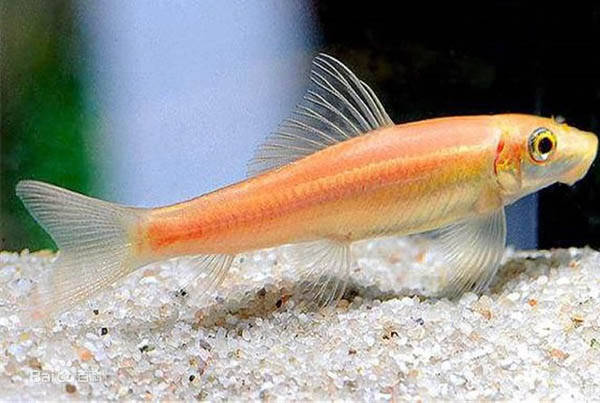The Latin name of the diapsid fish is Gyrinocheilus aymonieri, which is endemic to Yunnan, China.

The mouth of the diapsid fish forms a suction cup, which is used to attach to the surface of stones and shovel algae on the surface of the stones. As an ornamental fish, it is kept in an aquarium. It can shovel mosses and algae on the surface and bottom of the glass, making the water clear and the glass bright, so it is called a "scavenger" or "algae-eating fish".
It likes to live in rivers with rocky bottoms in mountainous areas, mostly in rapids, and can live in still water. It is a fish that is highly adapted to rapids. Its two gill holes have a unique breathing function. When breathing, water enters the mouth through the upper gill hole, making the mouth more specialized without affecting its adsorption function. It uses its mouth to adhere to the surface of stones or other objects, and water flows in from the water inlet for gas exchange, and then is discharged from the gill holes to replace the opening and closing of the mouth. It can adhere to the slope of the dam with its powerful mouthparts, so it is also known as a "wall-climbing fish". It breathes 230-240 times per minute, which is much more than other fish. It feeds on algae and plant debris. They lay eggs in streams when the river water rises sharply in June and July.
There are only 2-3 species in the genus in the Indochina Peninsula, and only one species in my country. Because of its adaptation to rapids, its mouth has evolved into a highly evolved suction cup, which is a rare example of biological adaptation to the environment. It has certain scientific research value in fish taxonomy and comparative anatomy, and is a precious specimen for teaching and scientific research. In addition, fishermen along the river mostly catch them during the spawning season, so the number has dropped sharply and it is on the verge of extinction.
It is listed in the second level of the "List of National Key Protected Wildlife in China". (Wild populations only)
Protect wild animals and stop eating game.
Maintaining ecological balance is everyone's responsibility!